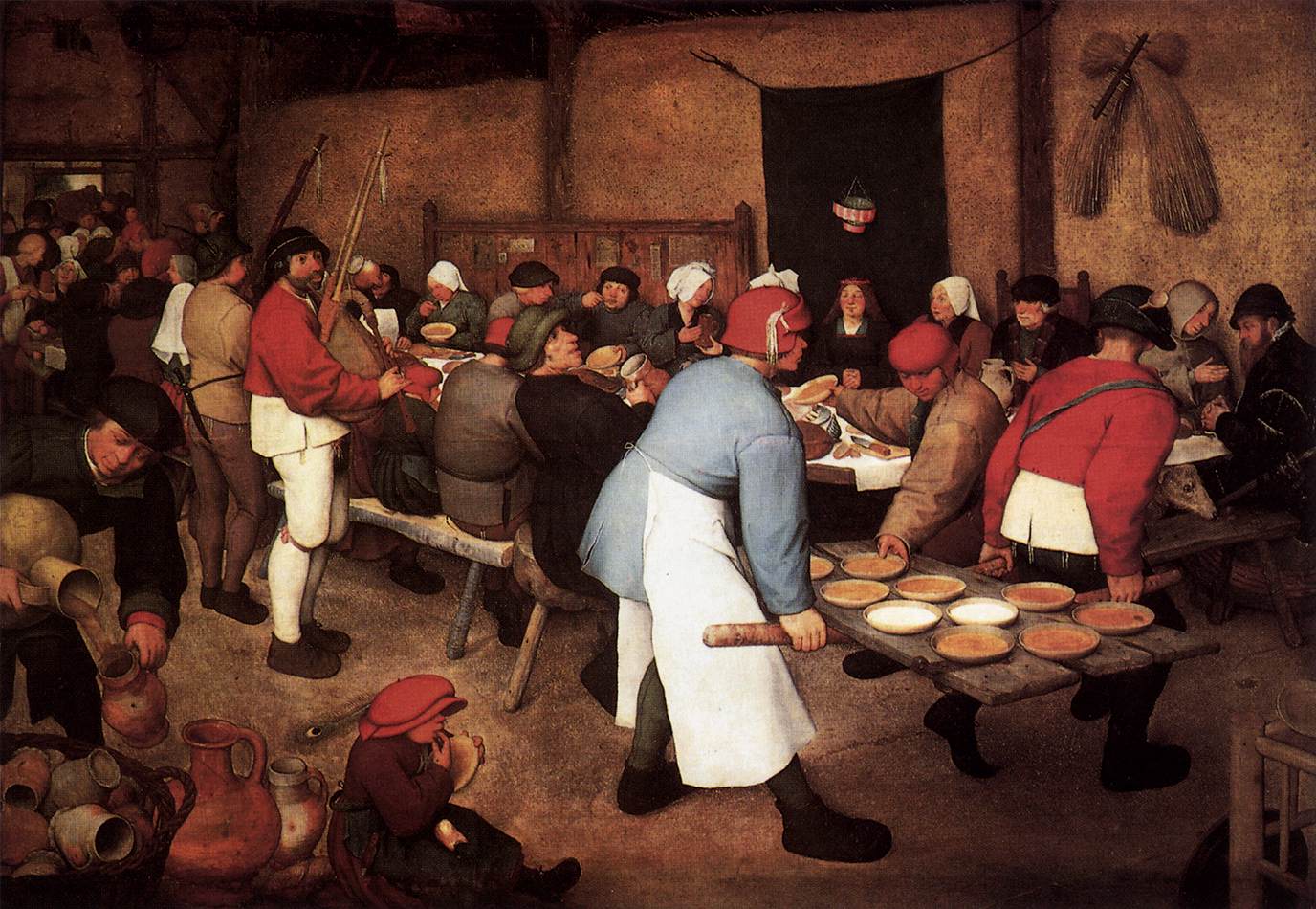Description
Pieter Bruegel the Elder's painting Peasant Wedding is a 16th-century masterpiece of Flemish art. The painting presents a detailed scene of a peasant wedding, with a multitude of characters and details that reflect the daily life of the time.
Bruegel's artistic style is characterized by its realism and its ability to capture the daily lives of ordinary people. In Peasant Wedding, this is clearly seen in the detailed depiction of the characters, their clothing, and their mannerisms.
The composition of the painting is impressive, with a multitude of characters moving in different directions and doing different activities. The viewer's eye is drawn through the scene by the variety of colors and details.
Color in Peasant Wedding is vibrant and varied, with a wide range of tones and shades that reflect light and shadow in the scene. The rich, earthy colors of the characters' clothing blend with the bright tones of the food and decorations.
The story behind the painting is fascinating, as it is believed to have been commissioned by an Antwerp merchant as part of a series of paintings on peasant life. The painting has been the subject of numerous studies and analysis, and has become one of Bruegel's most famous works.
There are little-known aspects of the painting that are also interesting, such as the presence of several characters who seem to be carrying out secret or mysterious activities in the scene. These details add a level of intrigue and mystery to the work.
In short, Peasant Wedding is a masterpiece of Flemish art that showcases Pieter Bruegel the Elder's ability to capture the everyday life of ordinary people. The composition, color and history of the painting make it a fascinating work full of interesting details.

